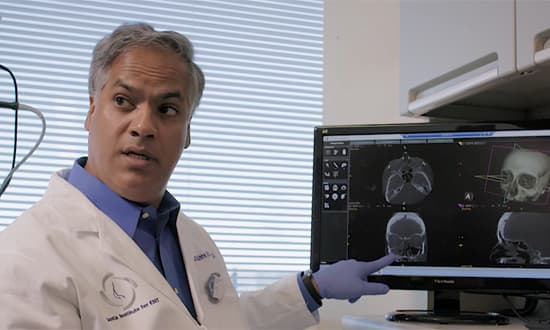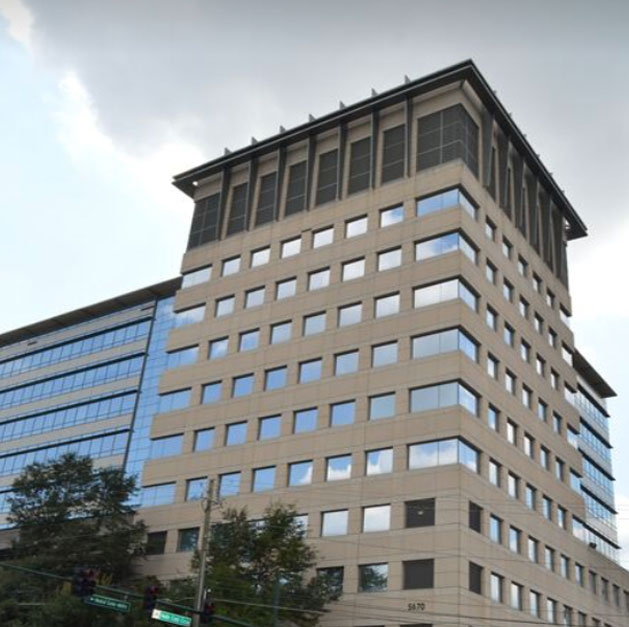Your sinuses are hollow, air-filled cavities behind your forehead, cheekbones, nose and eyes. Normally your sinuses are empty except for a thin layer of mucus, which is produced by the sinuses and drained through narrow channels into your nose. When your sinuses become inflamed (due to an infection or allergy), the inflammation causes swelling and increased mucus production, blocking nasal passageways so the sinuses cannot drain. The excess mucus creates pressure in your head known as a sinus headache.
If you suffer from sinus headaches, you know how debilitating they can be. You may feel a deep, dull, or throbbing pain around your eyes, temple, cheeks or forehead. The pain can intensify in damp, cold weather, or with sudden head movements such as bending down or leaning over. You may experience other sinus symptoms as well, such as nasal discharge, fever, fatigue, facial swelling, teeth pain, and a feeling of fullness in your ears.
Sinus Headache Treatments and Remedies
The first step in treating sinus headaches is to address the underlying condition. If the root problem is a cold, flu or sinus infection (sinusitis), decongestants or antibiotics may be prescribed. If hay fever, pollen or other allergies are triggering the sinus congestion, antihistamines may be called for.
While they don’t treat the underlying cause of a sinus headache, nasal steroid sprays can help reduce swelling and congestion caused by either infection or allergies. Pain relievers (acetaminophen, naproxen and aspirin) can also alleviate some of the pain, at least temporarily.
Additionally, many “home remedies” can be used to relieve some of the symptoms. Some sufferers get relief by alternating between cold and hot compresses placed over their eyes. Another idea is to make a paste of dried ginger and water, and applying that to the forehead. Massaging the temples using a couple drops of tea tree oil or peppermint essential oil can offer some relief. There’s a long list of herbs and botanicals that can be used to treat sinus headaches, including Chinese skullcap, devil’s claw, cinnamon, magnolia flower, angelica, chrysanthemum, feverfew and willow bark. A short nap, eating jalapeno pepper, drinking plenty of fluids, taking a hot shower or sauna (steam inhalation), using a humidifier while sleeping, and aromatherapy can also help.
Balloon Sinuplasty: the Long-term Treatment Option

For people with chronic or severe sinusitis and sinus headaches, the treatments and remedies just mentioned may not provide lasting relief. For them, a more long-term option may be needed. Some sufferers undergo sinus surgery in the operating room. For years, that was the only option for patients with severe sinusitis.
In 2005, a new technology became available to help patients with chronic sinusitis: Balloon Sinuplasty. This breakthrough procedure is a minimally invasive, low-risk method used to open blocked sinus passages and allow adequate ventilation and restore natural drainage. Balloon Sinuplasty is a safe, non-surgical procedure performed in a doctor’s office under local anesthesia.
The Sinus Institute of Atlanta, an Atlanta ear, nose and throat (ENT) center spearheaded by double board-certified ENT doctor Pradeep K. Sinha, MD, PhD, FACS, was the first medical center in Atlanta to offer Balloon Sinuplasty. He has performed more Balloon Sinuplasty procedures than any other ENT doctor in the southeastern United States.
Balloon Sinuplasty is performed using endoscopes. A flexible guide wire is inserted into the blocked sinus. A deflated balloon is then passed over the guide wire, and the balloon is then inflated to widen the natural opening into the sinus. This procedure is repeated for any other sinuses which are blocked. At the end of the treatment, a light dissolvable dressing may be placed into the nose, although this is often not necessary.
Data published in multitudes of leading ENT medical journals shows that the treatment is safe and effective: study participants received significant relief from their symptoms. Most patients report clinically meaningful improvement in sinus symptoms and quality of life through two years following the procedure.
Compared to conventional sinus surgery, Balloon Sinuplasty is less invasive, with minimal bleeding and less pre-operative pain. The opening of the sinuses are enlarged without any cutting or removal of bone or soft tissue, preserving the normal anatomy and mucosal tissue of the sinus. Recovery time is faster, averaging 1-2 days. Studies show that out of one of over 1000 patients who had Balloon Sinuplasty, the complication rate was one third less versus conventional sinus surgery. It can even be used to treat chronic maxillary sinusitis in children.
If you suffer from chronic sinus headaches or sinusitis, or to find out if you are a good candidate for Balloon Sinuplasty, contact the Sinus Institute of Atlanta at (404) 257-7512 to request an office consultation with Dr. Sinha.




